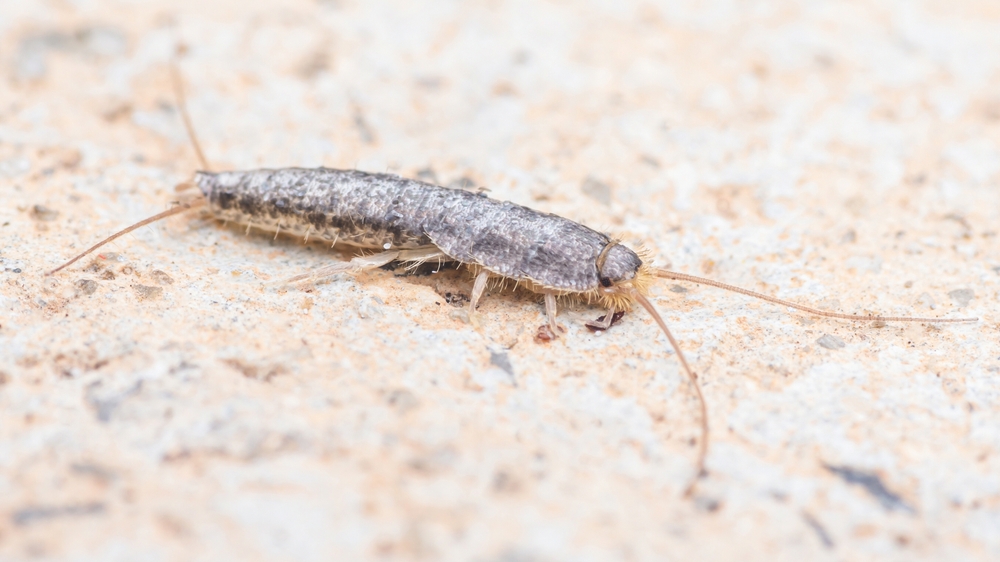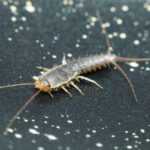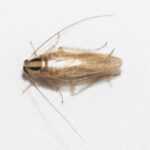Silver Fish Control: Effective Methods to Eliminate Silver Fish Pests
Seeing small, silver-colored insects at home? These pests called silver fish can damage your household items. Learn how to identify, control, and prevent silver fish efficiently in this guide.
- Silver fish are nocturnal pests that thrive in moist, dark environments and can cause significant damage to household items.
- Effective prevention includes lowering moisture levels, sealing entry points, and proper storage of food and materials.
- Control measures include chemical treatments like boric acid, natural remedies using essential oils, and professional pest control services.
Understanding Silverfish: Appearance and Behavior
Silverfish are known for their distinctive appearance and nocturnal habits. These pests, though not harmful to humans, can cause considerable damage to household items. Silverfish have elongated, flattened bodies covered in scales, which distinguishes them from other insects. Infestations occur in dark, damp places where these insects can find food and shelter. They thrive in urban environments, making them a common nuisance pest in homes.
Understanding silverfish traits and life cycle is key to identifying signs of infestation and implementing control measures. Silverfish possess long, slender antennae, which further help in distinguishing them from similar pests.
Identifying Common Traits
The common name silverfish comes from their silvery, metallic appearance and fish-like shape. These wingless insects have long, slender bodies covered in tiny, shiny scales, contributing to their shiny appearance. They possess long antennae, which can be as long as their body, and tail-like appendages at the rear.
Adult silverfish can reach up to 1 inch in length and are typically found in urban environments where they search for food sources such as starches and proteins.
Life Cycle Overview
The life cycle of silverfish involves several stages, starting from eggs to nymphs and finally adult silverfish. Silverfish eggs are tiny, white, and oval-shaped, often laid in hidden, moist locations. Upon hatching, the nymphs resemble miniature adults and continue to molt several times before reaching full maturity, a process that can take several months to two years depending on environmental conditions. Silverfish reach the adult stage after several molts, at which point they are capable of reproduction.
Adult silverfish can live up to four years, continuing to molt throughout their lives.
Preferred Habitats and Habits
Silverfish thrive in environments that provide the right combination of moisture and temperature. While some species are common in homes, others are found outdoors in environments such as bark, leaf litter, or near building foundations. Knowing these preferences helps locate and eliminate their hiding places.
Moist and Humid Environments
Silverfish prefer damp conditions and are commonly found in basements, bathrooms, and other moisture-rich areas. These pests are especially prevalent in humid areas, where elevated moisture supports their survival. They require high humidity levels, often above 75%, to survive and reproduce. Common hiding spots include bathrooms, basements, kitchens, and attics.
Lowering moisture levels in these areas can significantly deter silverfish infestations.
Warm and Cool Locations
These insects are highly adaptable, thriving in both warm areas near heating sources and cooler spots such as dirt crawl spaces and wall voids. Firebrats, in particular, are often found in warm places such as near furnaces, fireplaces, and hot water pipes, as these environments provide the heat and humidity they prefer. This adaptability allows them to inhabit a wide range of locations within a home.
Regularly checking these areas can aid in identifying and managing silverfish infestations effectively.
Signs and Damage from Silverfish
Detecting a silverfish infestation early can prevent extensive damage to household items. Regular sightings of these pests and the damage they cause are clear indicators of an infestation. Homeowners should inspect common hiding spots, such as basements, bathrooms, and under sinks, to find silverfish and confirm an infestation.
Damage to Household Items
Silverfish can cause significant damage to items like books, paper products, and fabrics due to their feeding habits. They primarily feed on starchy materials, such as book bindings and wallpaper paste. Silverfish may also feed on glazed paper with a starchy or glossy coating, leading to visible damage. This damage can lead to contamination of food supplies and degradation of valuable items, resulting in economic loss.
Common Hiding Places
Silverfish thrive in humid environments and are often found in areas with high moisture levels such as bathrooms, basements, and laundry rooms. They can also be found near heating units or in cooler areas like crawl spaces. Silverfish are frequently found in closed spaces like cracks, crevices, and wall voids where they can hide undisturbed.
Signs of an infestation include the presence of shed skins and damage to starchy materials.
Preventive Measures Against Silverfish
Preventing silverfish infestations involves a combination of methods such as reducing moisture, sealing entry points, and proper storage of items. Silverfish can enter homes through infested cardboard cartons and cardboard boxes containing books, papers, or other belongings. Using sturdy plastic bins instead of cardboard boxes for storage is recommended.
These measures create an environment less inviting for silverfish. Covering crawl spaces or attics with plastic sheeting can also help reduce humidity and block entry points.
Moisture Control
Using dehumidifiers in damp areas can effectively lower moisture levels and deter silverfish. Silica gel packets can absorb moisture, contributing to the dehydration of silverfish and hindering their reproduction.
Maintaining low moisture levels discourages silverfish from thriving in your home.
Sealing Entry Points
Inspect your home thoroughly to find and seal cracks and gaps that silverfish might use to gain access. Door frames are common entry points and should be checked carefully. Applying weatherstripping around doors and windows and caulking cracks can effectively block their entry.
Proper Storage Practices
Store food in airtight containers to prevent silverfish from accessing preferred food sources. Sealed plastic containers protect items like clothing and books from damage.
Control Options for Silverfish
Combining chemical, natural, and professional methods ensures thorough elimination and prevention of silverfish infestations. For large infestations, a combination of control methods is often necessary.
Chemical Treatments
Boric acid is a potent insecticide that disrupts silverfish digestive and nervous systems. Silverfish have weak mandibles, causing them to scrape surfaces rather than bite, resulting in characteristic damage such as paper discoloration and irregular holes.
Diatomaceous earth dehydrates silverfish on contact, making it an effective non-toxic control method.
Natural Remedies
Essential oils like peppermint and lavender can deter silverfish when used in sprays or diffusers, posing fewer risks than chemical treatments. Japanese cedar essential oil also helps repel silverfish naturally.
Health and Risk Considerations
Silverfish are generally not harmful to humans but can cause significant damage to household items. They chew on paper, fabric, and other materials, leading to potential destruction. They may also feed on dead insects, which can contribute to their presence in homes.
Disease Transmission
Silverfish do not carry pathogens and do not transmit infectious diseases, making them more of a nuisance than a health risk.
Allergies and Irritations
Allergic reactions to silverfish are rare, but some people may experience skin irritations or respiratory issues due to contact with shed skins.
Silverfish and Firebrats: Understanding the Differences
Though closely related, silverfish and firebrats can be distinguished by physical traits and habitat preferences. The common firebrat is often compared to the common silverfish due to similar appearance and size.
Physical Characteristics
Firebrats can reach up to ½ inch in size, while silverfish may grow to about ¾ inch long. Silverfish have a silvery sheen with smooth scales, whereas firebrats have a mottled brown appearance. The adult firebrat, or Thermobia domestica, has a shiny, mottled gray or brown body that distinguishes it from the common silverfish.
Habitat Preferences
Silverfish favor dark, damp environments with high humidity, such as bathrooms and basements. Some species are also found outdoors in leaf litter or decaying plant material, feeding on certain fungi.
Firebrats tend to thrive in slightly warmer environments compared to silverfish.
Understanding and controlling silverfish infestations is crucial for maintaining a healthy and damage-free home. By recognizing their traits, preferred habitats, and signs of infestation, you can implement effective prevention and control measures.
Whether you opt for chemical treatments, natural remedies, or professional pest control services like those offered by Gopher Patrol, taking action against silverfish infestations will help protect your home from these destructive pests.
Frequently Asked Questions
Why are silverfish harmful to humans?
Silverfish are not directly harmful to humans, as they do not bite or transmit diseases; however, they can cause allergic reactions in rare instances and may contaminate food supplies. Managing their presence is advisable to avoid potential issues.
What causes silverfish in homes?
Silverfish in homes are primarily caused by warm, moist environments and can indicate underlying water issues, such as leaks. They often enter through cracks or damaged screens and can be spread by infested items.
Should I be worried if I have silverfish?
While silverfish do not pose health risks, their presence can be troubling as they may contaminate food and damage household items. Address infestations promptly to mitigate nuisances.
What are the common signs of a silverfish infestation?
Signs include visible damage to books and fabrics, yellow staining, and droppings resembling tiny black pepper. Address these signs promptly to prevent further damage.
How can I prevent silverfish infestations?
To prevent infestations, reduce moisture levels, seal entry points, and store food and items in airtight containers. These steps create an environment less conducive to silverfish activity.





